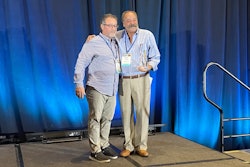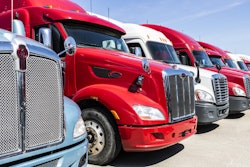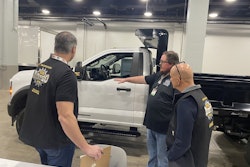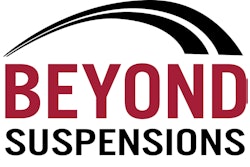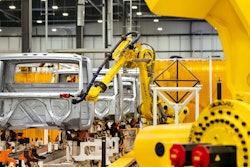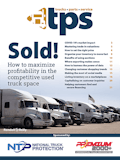
Production tariffs and new equipment regulations don’t impact used truck dealers as directly as their new truck counterparts, but their eventual shockwaves can still be plenty disruptive.
During the 2025 Used Truck Association (UTA) Convention Thursday at the Marriott Marquis in San Diego, an OEM panel featuring representatives from Volvo, Paccar, International and Cummins tackled both topics head on, offering their insights on how their operations are managing tariff and regulatory changes and how they will trickle into the used truck market in the years ahead.
Moderated by TPS Editor Lucas Deal, the panel kicked off with a discussion on the impact of the recently enacted 25% heavy-duty truck tariff on OEM operations. The panelists (David Hillman of International, Cara Howes of Paccar, Tom Swenson of Cummins, and John Bartel of Volvo Group) stated USMCA compliance exemptions and American production credits that exist within the tariff should enable manufacturers to avoid the full brunt of the tariffs.
[RELATED: UTA recognizes industry best with awards]
A majority of heavy-duty trucks in the North American market are produced in the United States, or in USMCA-compliant plants in Mexico or Canada, and the panelists said they are doing what they can to source domestically, but noted onshoring manufacturing is not something that can be done quickly.
The tariff discussion also touched on the Section 232 steel and aluminum tariffs and derivatives tariffs and their impact on global supply chains. The panelists were in agreement that the steel and aluminum tariffs have been the most disruptive to their operations — both due to the rising costs and the inconsistencies of the taxes across categories.
The mood shifted slightly when the discussion transitioned to regulations. The panelists were in agreement that their companies anticipated regulatory changes this year after last year’s election but they weren’t expecting so much activity so fast.
Within six months of taking office, the Trump administration revoked the EPA waivers granted to California’s Air Resources Board (CARB) — a move CARB continues to fight with little success — announced its intent to remove the Endangerment Finding as a tool for setting emission regulations and has expressed a willingness to rollback EPA 2027 Low NOx regulations.
The panelists said its possible all these regulations will be eliminated in time, but today they must operate by the letter of the law, not by possible likely outcomes. That means following DOJ guidance in California but otherwise sticking to their production and sourcing plans for still intact GHG and NOx regulations.
[RELATED: Would tossing GHG regs help drive truck sales?]
Of the latter two, the panelists felt the GHG regulation is more likely to be eliminated because of its future zero-emission vehicle (ZEV) sales mandates. Yet the panelists also noted the fuel economy portion of the regulations will happen anyway, without government intervention, because manufacturers are perpetually driven to improve fuel economy as a competitive advantage.
As for the NOx regulation, the panelists state the EPA’s prime directive is to reduce particulate and tailpipe emissions and that’s what the NOx regulation exists to do. So while an implementation delay or reduction in the warranty component of the regulation could occur, the panelists believe it is hard to imagine the rule being fully removed.


